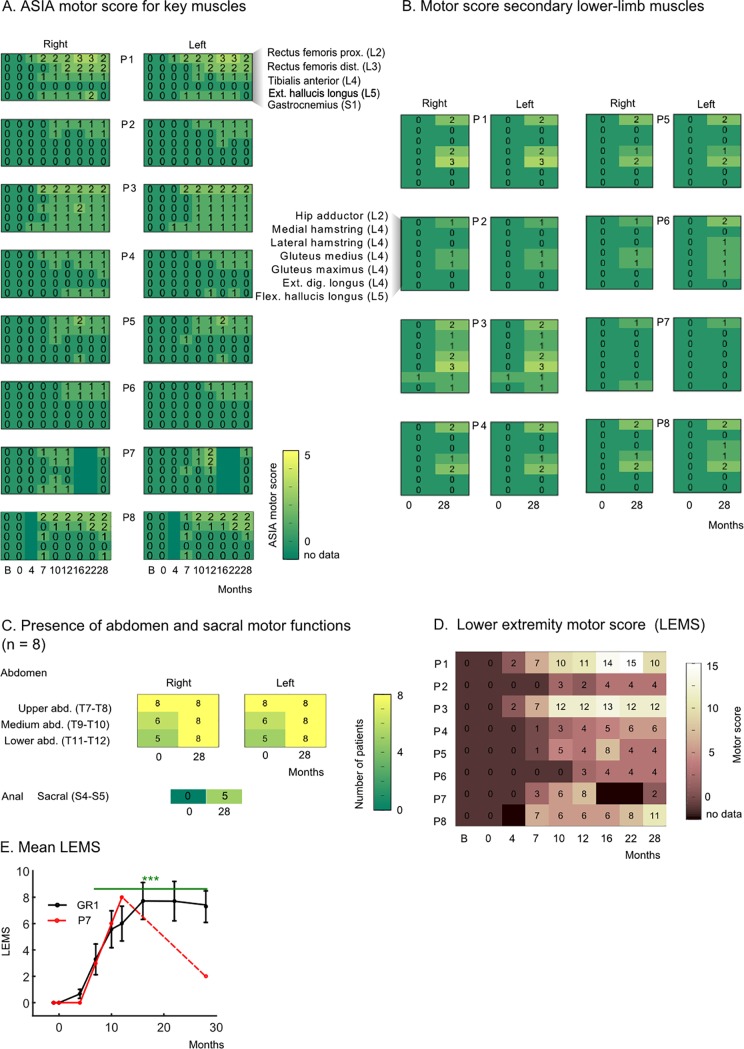Fig 4. Motor improvement.
Clinical evidence. (A) Five key lower-limb muscles (proximal and distal rectus femoris, tibialis anterior, extensor hallucis longus and gastrocnemius) were evaluated eight times throughout the training [6] (0 to 28 months) and before starting the training (B: baseline). The motor score describes the amplitude of a contraction from 0 (absence contraction) to 5 (normal contraction). (B) Motor score for seven non-key lower-limb muscles measured at the onset of the training (0) and the end of the end of the training (28 months) for all patients. (C) Number of patients (over eight) with present muscle contraction for three abdominal muscles and the anal sphincter muscle (myotome S4-S5). (D) The LEMS is obtained for each patient by summing the score of all key muscles reported in panel A bilaterally. Missing data periods are in black. (E) Mean± SEM of the motor score for GR1 patients is reported in black and motor score for patient P7 is in red.

